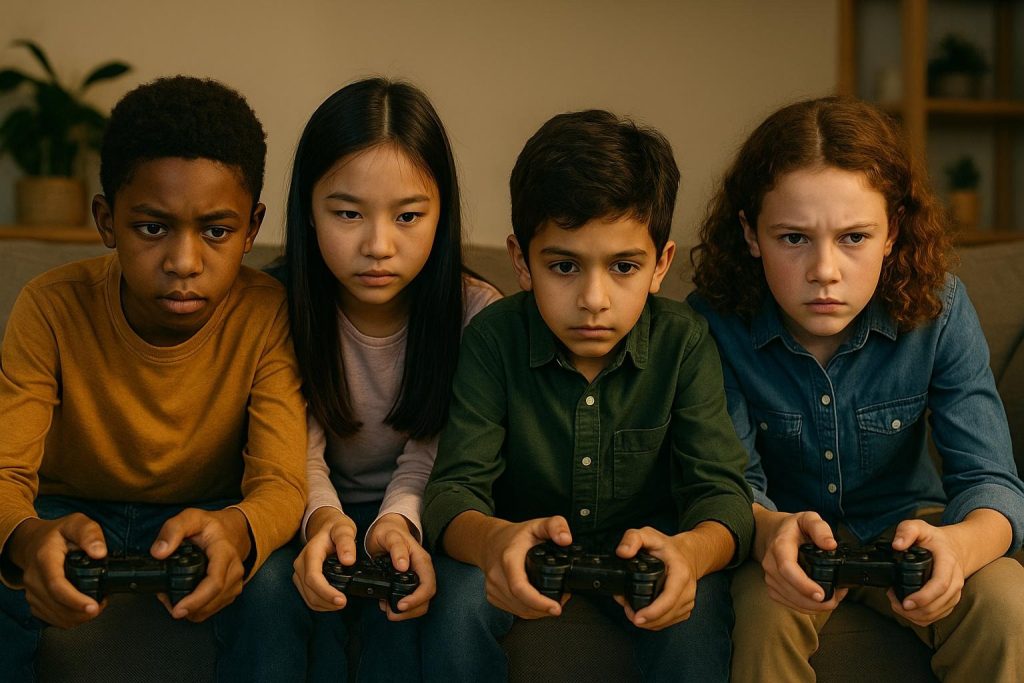Play, Pay, Repeat: Why Australia Needs to Stop Chasing Encryption Backdoors and Start Getting Serious About Kids, Games,and Digital Safety

Over the weekend, I read an article by Jackson Ryan in The Guardian that stopped me in my tracks. It asked a pointed question — “Does video game monetisation harm children, and what is Australia doing about it?” — and its answers were far from reassuring.
At the heart of the piece is Roblox, a wildly popular gaming platform among kids aged 6 to 16. It’s colourful, social, and seemingly harmless. But behind the friendly avatars and virtual adventures lies an aggressive monetisation model, powered by in-game currency (Robux), endless micro-transactions, and a design ethos that blurs the lines between play and purchase.
This is not new, but the implications are becoming harder to ignore — particularly when brands like Woolworths decide to insert themselves into the mix.
Last year in Australia, Woolworths launched a collaboration with Roblox, tying virtual game experiences to in-store purchases. On the surface, it looks like a clever loyalty scheme — but it brings one of Australia’s most trusted retail brands into direct partnership with a digital platform already under fire for predatory monetisation mechanics, opaque privacy practices, and a lack of meaningful safeguards for kids.
💬 The Hidden Cost of ‘Free to Play’
Roblox is free to download and play — and that’s part of the problem. Once inside, young players are encouraged to spend Robux on everything from costumes and pets to VIP access and upgraded tools. While that may sound like harmless fun, research shows the game uses psychological nudges not dissimilar to gambling to keep kids engaged and spending. Time-limited offers, loot box-style rewards, and peer pressure within digital communities all contribute to an environment that promotes consumption over caution.
As The Guardian points out, many parents don’t realise how deeply these games are monetised until they see the credit card bill. Or until their child is scammed within the platform, either through dodgy game developers or fake “Robux generators” that trick kids into handing over personal information.
🛑 Trust and Safety Isn’t a Marketing Strategy
It’s deeply disappointing to see Woolworths — a brand synonymous with family values and community trust — lend its name and marketing power to a platform with such well-documented safety concerns. When a household name chooses to promote a game like Roblox without publicly acknowledging the risks, it sends a message that commercial gain trumps child protection.
To be clear, I’m not calling for a ban on gaming. Play is essential. So is creativity. But monetised play — especially when targeted at children — deserves scrutiny. We wouldn’t accept pokie machines in primary schools. So why are we tolerating gamified spending platforms in their pockets?
⚖️ Where Regulation Lags, Harm Creeps In
Australia’s current approach to online safety for children has come a long way thanks to the leadership of the eSafety Commissioner. But monetisation models and platform economics still sit outside most of our online safety codes and industry guidance.
Rather than continually circling the drain on contentious issues like breaking end-to-end encryption, policymakers could make an immediate impact by addressing the far more visible — and fixable — harms posed by games designed to extract maximum dollars from our youngest players. This isn’t about surveillance; it’s about standards.
🔐 The Cyber Angle: Data, Identity, and Exploitation
In many of these gaming ecosystems, children are not just players — they’re also data points. Behavioural data, preferences, and engagement patterns are collected to optimise in-game prompts and future spending strategies. In the wrong hands, or stored without sufficient protection, this information could be used for identity theft, digital manipulation, or worse.
We already know that online gaming platforms are common entry points for phishing scams and credential theft. Children are especially vulnerable, often unaware of red flags and eager to engage with strangers or click flashy links.
Any retailer or brand entering this space must be accountable not just for the content they promote, but for the data security and privacy implications their partnerships introduce.
🛠 So What Should Be Done?
We need to rethink digital safety in ways that account for monetisation mechanics and commercial partnerships. That means:
- Stronger regulation of in-game monetisation targeting minors
- Mandatory disclosures for parents around spending potential
- Clear ethical boundaries for retailers partnering with platforms that market to children
- Privacy-by-design infrastructure that limits data collection and enforces zero-knowledge principles
🎯 A Final Thought
Children shouldn’t need to read the fine print to feel safe online. And parents shouldn’t have to play detective to figure out which games are manipulating their kids. If a company like Woolworths wants to play in the gaming space, it should first earn its badge in digital trust and safety.
Because the real game here isn’t Roblox — it’s whether Australia is prepared to protect its youngest citizens from digital environments that put profits before protection.
About the Author:
Kim Chandler McDonald is the Co-Founder and CEO of 3 Steps Data, driving data/digital governance solutions.
She is the Global VP of CyAN, an award-winning author, storyteller, and advocate for cybersecurity, digital sovereignty, compliance, governance, and end-user empowerment.